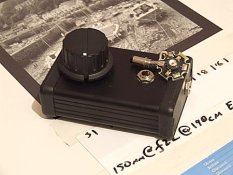I knew we are not done with that subject.
OK, it's always best to keep an open mind, so...
How then does one explain and reconcile the following two direct observations?
(1) In a darkened room light from a 635m red LED is reflected directly off the recording side of a conventional CD disc. In addition to the dominent reflected red color one can also make out small but disinct blue and green slivers of reflected light. No other reflected colors are visible. Then, without changing anything else, a single sheet of red Rubylith is placed between the LED and the CD and the observation repeated. The dominent red is still there. But the blue and green are now missing. There is no longer any visible trace of them. If the Rubylith is then removed, the blue and green are again visible. Changing the angle of observation had no effect on the blue and green colors.
(2) In a darkened room a sheet of b&w photographic paper is pre-fogged to just below threshold. Then the standard safelight test is performed under the light from six 635nm red LEDs. After processing there is distinct evidence of fogging after several minutes of exposure. Then, without changing anything else, the LEDs are placed under a light-proof covering of red Rubylith and the test is repeated. After 60 minutes of exposure the paper is processed. There is no visible evidence of fogging out to the maximum exposure. The paper is then checked with a reflection densitometer, which confirms there is no fogging.
In the first case, if the blue and green colors were somehow being generated on the CD side of the Rubylith, then the addition of the filter should have no effect. Except perhaps to slightly lower the intensity of the LED's red light if the color of the Rubylith was not a perfectly transparent match. If, however, the blue and green were being created on the LED side of the Rubylith, then the filter should indeed remove them.
In the second case, the exact same logic applies as in the first case. Except that the human observation has been replaced with a sheet of b&w photographic paper that is sensitive to blue and green light, and is examined after the test by an instrument. In effect this substitutes an objective non-human observation for a subjective human one.
And in both cases the final observational results match each other.
(My darkroom where I performed these observations is perfectly dark by design and lots of effort. There is no extraneous light. I have purposely sat inside in the dark for 60 minutes, then scoured the door frame and all other corners for light leaks. There are none. Even with a floodlight on the outside pointing at the door. When I have open boxes of 8x10 film on the counter, I don't want to have to worry.)
(The paper used in the fog test was Ilford MGIV, selected precisely because it is sensitive to both blues and greens.)
(I understand the principle of constructive and destructive thin film interference.)
Ken












